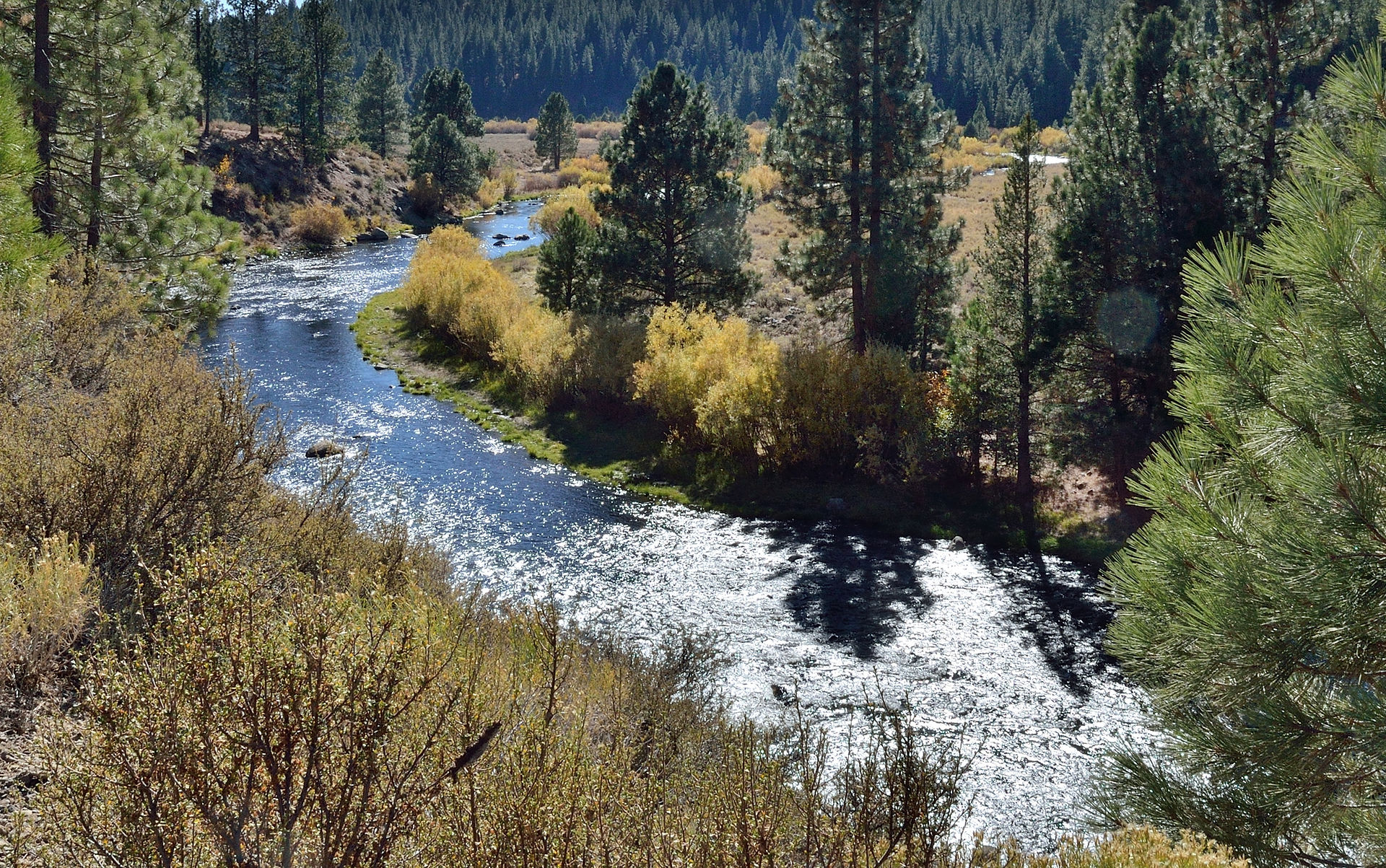


California's Only Fly Fishing Report Thats Updated Weekly

Scan here to view fishing report on phone
CLICK HERE
for information about advertising on our site



Little Truckee
FISHING REPORT
Updated -4/14/25
Scroll down for information about Lodging, Maps
and up to the minute Stream Flows
Current River Conditions: Flows are 150 CFS and clear. For up to the minute flow information click on the link in the next section below.
Fishing is Good: Miles at Trout Creek Outfitters in Truckee reports
"The flows on the Little Truckee are great right now, sitting at 150 CFS today. The fishing out here has been excellent using both dries and nymphs. At 150 CFS, Euro nymphing is a really fun way to fish this river and can be incredibly effective. 6x fluorocarbon can be very important when nymphing paired with small size 16-18 perdigons, worms, eggs, midges will be great options right now. The baetis have still been the dominant dry fly hatch right now, but we are also seeing winter stones and skwala stones. We’re just a few short weeks away from seeing the single most important bug of the summer, the PMD."
Click here to see PDF of CDFW 2025 Regulations
See Hatch Chart Below
LODGING
Truckee Area
LOCAL FLY SHOPS
Lower
American River Shad
Orientation Clinics*
are Booking Now
*NEW DATE ADDED/MAY 10
Click here for info
Home
EASTERN SIERRA
Truckee River
Little Truckee River
West Carson River
East Carson River
West Walker River
East Walker River
Upper Owens River
Lower Owens River
Hot Creek
Crowley Lake
Pyramid Lake
WEST SLOPE NORTHERN SIERRA
Upper Sacramento River
McCloud River
Hat Creek
Fall River
Pit River
Almanor Lake
Baum Lake
STILLWATERS
Lower Elevation Still Waters
VALLEY TAIL WATERS
Lower Sacramento River
Feather River
Lower Yuba River
Lower American River
Lower Mokelumne River
Putah Creek
NORTH COAST
Trinity River
Klamath River
Russian River
HATCH CHART - LITTLE TRUCKEE RIVER
About the Little Truckee River
The Little Truckee is the central Sierra’s little secret. Though it’s larger sibling, the Truckee River gets all of the attention in the national media the Little Truckee can have some of the most consistent fishing throughout the spring, summer and fall. Not only does it hold a large concentration of fish but it is very fly fisherman friendly as the low density of riparian vegetation along it’s banks lets you concentrate on what’s in the water rather than what’s tangled up in the trees.
Because the Little Truckee is a tailwater its water temperature stays relatively consistent all through the summer. When August and September come, the water in the main Truckee can get warm enough to make fishing tough once the sun comes up, yet the water being emitted from below Stampede Dam is always cool, which makes a great place to fish on a hot afternoon.
The Little Truckee flows south out of the eastern Sierra into Stampede Reservoir, then upon its exit below the Stampede Dam, flows through about a three mile meadow section and a short canyon section to eventually dump into Boca Reservoir.
Once it leaves Boca it travels another one hundred yards to its confluence with the main stem of the Truckee River just east of the town of Truckee. The “special regulations or trophy trout section” between Stampede Dam and Boca Reservoir is the magnet that draws fly fishermen to what is primarily a wild Rainbow and Brown trout fishery though it’s supplemented by hatchery trout that find their way up from Boca Reservoir.
Though the Little Truckee is called a “river” it actually resembles a large creek and consists of a variety of water from riffles and pools to pocket water and flats. The geology of the river bottom and surrounding area is volcanic, which is typical of eastern Sierra watersheds. In fact, the porous nature of the volcanic rocks of the river’s bottom contributes greatly to its ability to host a huge variety of aquatic insect’s which contribute to the fertility that makes the Little Truckee very attractive to trout.
The large variety of bugs however, can make fishing tougher as the fish have lots to choose from and can get quite finicky at times. The aquatic life is typical of the east slope of the Sierra. Blue Wing Olives, March Browns and Green Drakes start off the season then come the Pale Morning Duns, Little Yellow Stones and Caddis. Towards the end of summer hoppers become a significant food source for the trout, and then the year finishes off with Blue Winged Olives making reappearance. Chironomids are omnipresent throughout the year.
